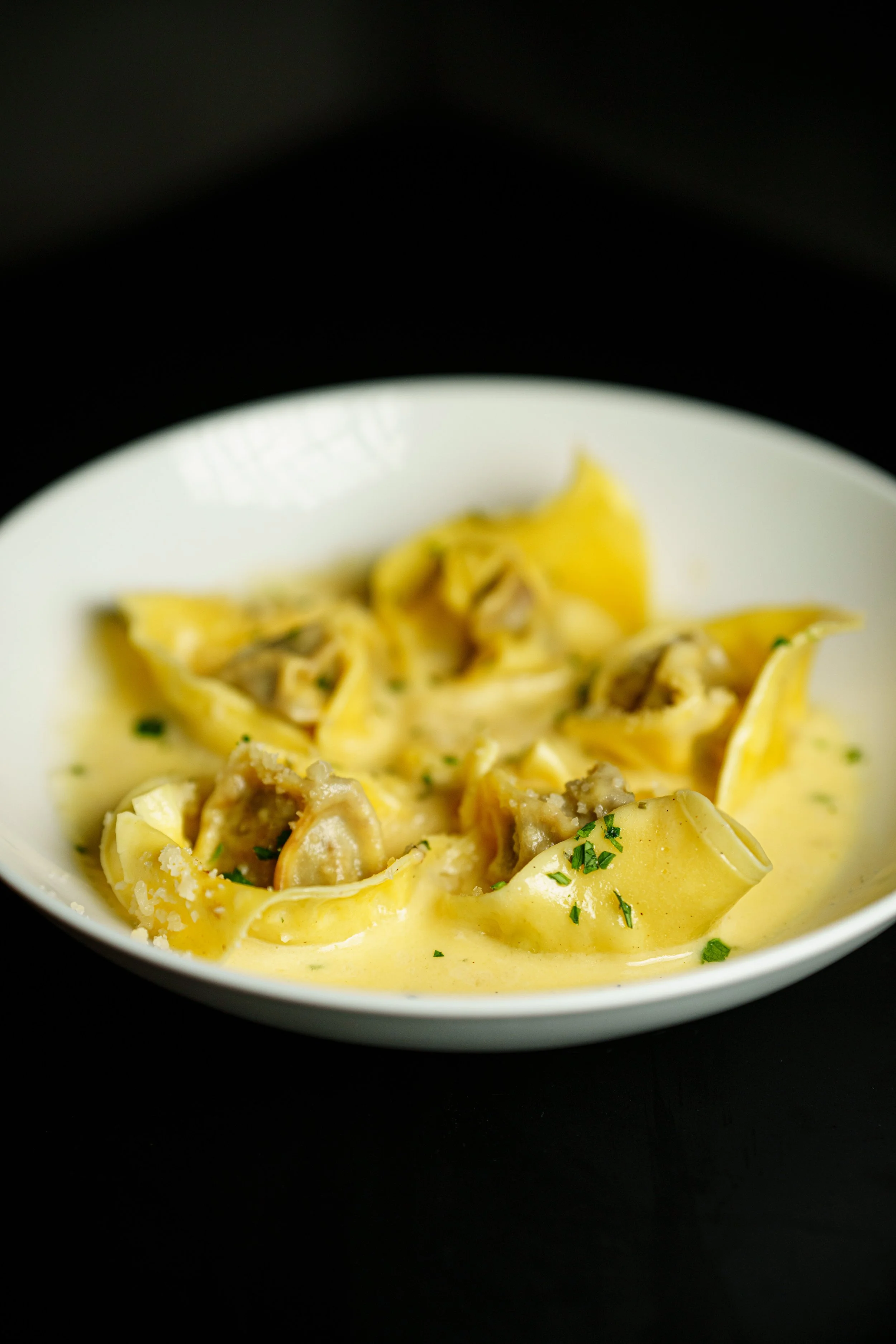Inside the Kitchen: How We Make Handcrafted Pasta Daily
In the heart of Tenafly, behind the softly lit dining rooms and the hum of conversation, Spring House’s kitchen comes alive every afternoon. Rolling pins press dough, flour dusts the air, and fresh pasta takes shape by hand. This is where tradition meets precision, and every dish begins with a commitment to quality that defines Italian dining in Bergen County.
The Ritual of Fresh Pasta
For the chefs at Spring House, making pasta from scratch is not just a task but a ritual. Each batch begins with carefully measured ingredients: semolina flour, eggs, and a touch of olive oil. The dough is kneaded by hand until it reaches the right texture, soft yet elastic, then allowed to rest. This pause gives the gluten time to relax, creating the supple foundation needed for perfect pasta.
The process is deliberate and calm. It takes patience to achieve the right balance between firmness and silkiness, and the chefs rely on touch and instinct more than timers or machines.
Tradition Meets Modern Technique
At Spring House, the goal is to create pasta that feels timeless but fits modern tastes. The recipes are rooted in Italian heritage, passed down through generations, but adapted for the restaurant’s elevated menu. For example, the Cacio e Pepe uses housemade gnocchetti tossed with cultured butter and freshly cracked pepper for a bold yet simple flavor that honors Rome’s culinary history.
The Lasagna Bolognese showcases layers of pasta sheets rolled thin in-house. Between each layer lies a slow-cooked ragu made from prime beef, tomato, béchamel, and Parmigiano Reggiano. This combination of traditional flavor and careful preparation is what gives every bite its depth.
Sourcing the Best Ingredients
Freshness begins with what goes into the dough. The kitchen uses imported Italian flour, chosen for its texture and consistency, combined with locally sourced eggs to maintain a golden hue and delicate bite.
Even beyond the pasta itself, ingredients play a starring role. From the San Marzano tomatoes used in the Spaghetti Pomodoro to the rich Pecorino Fulvi in the Arancini, every product reflects the restaurant’s dedication to authenticity. The result is a menu that stands out among Italian restaurants in Bergen County, not for gimmicks but for genuine attention to detail.
From the Table to the Farm
Spring House works closely with regional farms that share its values. La Belle Farms in Sullivan County provides organic poultry that pairs beautifully with pasta dishes like the Pollo Parmigiana or Half Roasted Chicken with Lemon Herb Sauce. Norwich Meadows Farm supplies organic produce, such as vibrant greens and sweet artichokes, which are often incorporated into pasta sauces and vegetable sides.
These partnerships allow the restaurant to celebrate local agriculture while maintaining the unmistakable character of Italian cuisine. Every plate tells the story of both New Jersey’s seasonal harvest and Italy’s culinary artistry.
The Art of Pairing Sauces
Pasta and sauce share a relationship that depends on precision. The chefs at Spring House take care to match the right shape to the right preparation. Spaghetti works best with light, smooth sauces like pomodoro or aglio e olio. Gnocchetti and short pastas are better suited for thicker sauces that cling to their ridges.
A dish like Cacio e Pepe benefits from minimalism, letting the butter and cheese coat each piece evenly. In contrast, Lasagna Bolognese is rich and layered, meant to be hearty and comforting. The team treats each dish as an expression of balance, using just enough sauce to complement rather than overwhelm.
Why Handmade Pasta Matters
The difference between handmade and factory-produced pasta is easy to taste. Handcrafted pasta absorbs sauces more effectively, offering a texture that feels both firm and delicate. It cooks more evenly and has an aroma that machine-extruded pasta simply cannot replicate.
By producing it daily, Spring House guarantees freshness and consistency. No dish sits waiting. Every order begins with pasta prepared that day, giving guests an experience that feels alive with flavor and care.
Behind the Scenes: A Daily Rhythm
Each morning, the kitchen begins to hum before the doors open. Doughs are mixed, cut, and shaped according to the day’s menu. Some are destined for the dinner service, others for Sunday brunch, where pasta makes a surprise appearance in dishes like Spaghetti Carbonara with Guanciale and Egg.
As the afternoon progresses, trays of freshly rolled pasta rest on linen cloths, waiting to be cooked to order. The aroma of toasted garlic, butter, and cheese fills the space, signaling another evening of exceptional Italian dining in Bergen County.
The Spirit of Italian Craftsmanship
The tradition of pasta-making represents something larger at Spring House. It is a reminder that fine dining does not need to be complicated, it only needs care. By keeping the process in-house, the restaurant preserves the human touch that defines true Italian hospitality.
Whether it is the comforting texture of Spaghetti Pomodoro, the creamy richness of Cacio e Pepe, or the layered beauty of Lasagna Bolognese, each dish reflects hours of work and the belief that food made by hand tastes better.
A Taste Worth Sharing
For guests seated in the warm dining room or enjoying the evening air at the garden bar, each forkful carries the story of dedication. The same team that kneads, rolls, and cuts the dough also brings it to the table, proud of what they create.
At Spring House, pasta-making is not a performance for show but a daily act of respect for the craft. It is what transforms dinner into something meaningful; a reminder that the best Italian restaurants in Bergen County continue to thrive when they honor both tradition and care.


